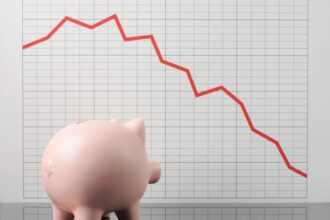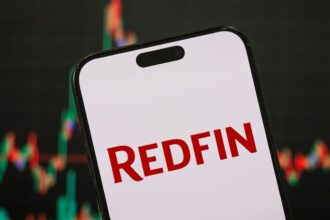In this article, I present the strategy that focuses on cash-rich firms. Continuing market volatility attributed to banking industry fears and recession worries makes companies with solid cash positions more likely to succeed during these turbulent times. The AAII Cash Rich Firms screening model has an average annual gain since inception 1998 of 7.2%, versus 5.6% for the S&P 500 index over the same period.
Investing In Cash-Rich Firms
A healthy cash position provides important flexibility and safety to a firm. Cash-rich firms should be able to meet their debt obligations easier, decreasing the probability of a creditor weakening the position of the equity investors or even gaining control of the firm. During an economic slowdown, cash allows a cyclical firm to continue its research and development (R&D) efforts, as well as undertake capital expansion or productivity improvements, in anticipation of an economic rebound.
Firms with excess cash positions can also elect to distribute the cash to shareholders in the form of dividends. Many firms have also chosen to use excess cash to repurchase shares on the open market. This helps to boost the share price in the short term by providing demand for shares. And with fewer outstanding shares, the same level of net income boosts earnings per share.
Firms with excess cash can also attempt to use the cash strategically to broaden their product lines or diversify into new areas. This can be accomplished either through direct capital investment or the outright purchase of another firm.
A high cash position can also be a disadvantage. Cash is generally defined as cash plus marketable securities that are readily convertible into cash. This consists of bank deposits and short-term instruments such as Treasury bills. The cash position may reduce profitability if it earns a lower rate of return than other assets in the company. One would expect any corporate investment to earn more than the money market rate in the long run.
When finding companies with large cash balances, the critical question becomes: Why are they holding on to the cash? Often, it points to a firm in a mature industry with few growth prospects. The firm may have reasonable profit margins, but little need for additional capital. For such a company, the need for a good management team is especially important.
Measuring Cash Levels And Applying The Screen
Firms must report their cash holdings quarterly, which is done when they file their quarterly financial statements. Cash and cash equivalents are the most liquid assets on the balance sheet. Dividing cash by the number of outstanding shares provides us with the measure of cash per share. The amount of cash per share relative to the market price per share provides a useful indication of the cash level of the firm.
Screening for firms with high proportions of cash to share price represents a reasonable strategy for tracking down cash-rich firms. When performing such a screen, it is important to exclude companies in the financials sector since the nature of their business requires them to hold large cash positions. Utilities are excluded because of their regulated nature and overall low growth potential. Real estate investment trusts (REITs) are also excluded due to their unique organizational structure and non-comparable financial statements.
In addition to excluding financials, utilities and REITs, a filter requiring positive earnings from continuing operations for the last 12 months is specified as a minimum current profitability requirement. This very simple screen helps to indicate that the passing firms are at least making some money in their ongoing operations. More stringent screens could look for positive free cash flow or positive cash flow from operations.
The next criterion specifies a minimum share price requirement of $5. Without the minimum share price requirement, bankrupt firms with a share price of a few pennies could dominate the screen.
To measure the financial strength of the firm, we first screen for a debt-to-total-capital ratio below the industry norm. This is a popular measure of financial leverage. Debt for this ratio consists only of long-term debt, not total debt. Capital refers to all sources of long-term financing—long-term debt and stockholder’s equity. A high ratio indicates higher risk. However, a low level may not be an indication of low risk if current liabilities are high.
To help measure the overall levels of liabilities, we also require debt relative to total assets to be below the industry norm. The debt-to-total-assets ratio measures the percentage of assets financed by all forms of debt. A higher percentage, and a greater potential variability of earnings, translates into a greater potential for default. Yet, prudent use of debt can boost return on equity.
Our final conditioning screen looks for a minimum market capitalization (shares outstanding times price per share) of $50 million to help ensure a minimum level of trading liquidity.
Screening For High Gross And Net Cash
Our first screen for high levels of cash compares the cash per share to the stock price. We are looking for stocks with a cash level of at least 20% of the stock price. If you were to purchase a $20 stock with cash representing 20% of the stock price, one could argue that you are in effect paying only $16 for the business.
As important as it is to look at cash, it is equally important to look at the financial obligations of the firm. A high level of cash per share could be quickly reduced when considering the firm’s short-term liabilities and long-term debt. Some firms build up a cash reserve to ensure that they can meet the required payments of their short-term debt and current portion of long-term debt.
A useful modification to the ratio of gross cash to price per share is to subtract the short-term liabilities from cash to establish a net cash per share figure, which provides a better measure of the excess cash on hand. Dividing the net cash per share by the share price indicates how much of this “excess cash” is available on a per-share basis.
Our second screen for high levels of cash looks for stocks with a net cash per share level of at least 20% of the stock price. The table of passing companies below lists both the net cash per share and net cash as a percent of stock price. Normally, many of the firms with positive ratios of cash to price per share have negative ratios once short-term liabilities are considered.
Beyond looking at the static cash positions of these firms, an examination of the actual cash generated by the firm is even more important for a long-term investor. We do not screen for this element in our analysis, but measures such as cash flow or free cash flow can help to gain a feel for the cash generation. Free cash flow is calculated by taking the cash flow from operations as reported on the firm’s statement of cash flow and subtracting capital expenditures (capex) and dividends. This measure attempts to capture whether the firm is generating enough cash to help fund any necessary internal capex.
Belief in Management Is Critical
Screening for cash-rich stocks is not a simple process. Preliminary filters should screen for companies that not only have a high level of cash per share, but also a strong balance sheet, the potential for future earnings growth and positive free cash flow per share. AAII’s screen highlights companies with a relatively large percentage of net cash on hand. A high net cash level relative to share price does not ensure financial strength or price stability. In selecting final candidates, much of the analysis rests on your belief in management’s ability to use and invest any cash holdings wisely.
Stocks Passing the Cash Rich Firms Screen (Ranked by Cash to Price)
___
The stocks meeting the criteria of the approach do not represent a “recommended” or “buy” list. It is important to perform due diligence.
If you want an edge throughout this market volatility, become an AAII member.
Read the full article here










